
(Click for calendar detail.)
by John P. Pratt
1 Aug 2019, 1 Eagle (SR) 7 REED (Aztec)
©2019 by John P. Pratt. All rights Reserved.
|
1. Book of Mormon/Ixtlilxochitl 2. Jaredites/Olmecs 3. Nephites/Nahuatls 4. Moroni/Toltecs 5. Christ/Quetzalcoatl 6. Toltecs Destroyed 7. Year of Warning 8. Conclusion Notes |
Two histories of nations of ancient America, written centuries apart by authors totally unaware of each other, have many details in common. Both have been greatly overlooked as fabrications or myths, so much so that one has never even appeared in English. This new comparison points out many similarities, especially in both providing precise dates for what are likely identical events described from two perspectives.
In 1610, an Aztec prince named Ixtlilxochitl wrote a history of New Spain (central Mexico), compiled from several ancient histories which had escaped being burned. In his summary of Toltec history, which began a millennium before the Aztecs, he gives a detailed description of a great prophet who led the founding of the Toltec capital city of Tula, who prophesied many events of their future history including details about the fall of the empire five centuries later.
 |
Those familiar with the Book of Mormon history will immediately recognize that it ends with a war in AD 385 which terminated the Nephite civilization. There were two great prophets at the end, one named Mormon who compiled many ancient records into a sacred summary book (The Book of Mormon). His son Moroni escaped the final destruction and wandered alone in the wilderness with the book. In AD 421 he made his own final entry into it. His future fate has been unknown.
Another point of similarity between these accounts is that the Aztec history has two names for the prophet which appear to be used somewhat interchangeably: Hueman (Huemac) and Huematzin (Ixt. 3:2,4). The suffix "tzin" in Nahuatl means "child/son of" (Ixl. 4:10), so the name "Huema-tzin" could mean the son of Hueman. Thus, the two names could refer to a prophet and his son, such as Mormon and Moroni. Note also the first syllable of the names is the same in both languages.
Thus, this evidence seems compelling enough to at least consider the possibility that Moroni was indeed the prophet who is described as being present at the founding of Tula! It was founded well after AD 401 when Moroni had last said he was alone (Mormon 8:3,6), so he could have joined the noble families after that. They would have known him as the last great prophet, which explains why they would have sought his counsel in all things.
This article not only explores that possibility in more detail but also makes several comparisons between the Aztec history and the Book of Mormon, including the Jaredites. Keep in mind that the Aztec book (1610) was written 220 years before the Book of Mormon and was not published until 1848 (Spanish). A photo copy of the 1610 publication is now available in PDF format. Thus, neither author knew anything about the other, and even today there is still no English version of the entire Aztec history, even though one is expected in Oct, 2019.[1]. Excerpts in English concerning the Toltec history were published earlier today on my website for this article to reference.[2] Readers who would like to understand the Aztec Calendar could read the introduction to that article, but it is not necessary to understand this article because all dates will also be given in AD/BC years.
A related topic which is not discussed in this article is that the Aztec history makes it clear that the Nahuatl (Nephite) people had lived south of central Mexico because they migrated north to their new homeland. Until recently most attempts to identify the locations of the events of the Book of Mormon focused on southern Mexico and Central America (Mesoamerica), but recent efforts have focused more on North America because the archaeology is better there, even though the sites do not fit the map described in the Book of Mormon as does Mesoamerica.[3] Moreover, it is important to note that North American artifacts rarely date to before AD 100. The Book of Mormon explicitly states that some ten thousand Nephites migrated to the land north in 55 BC (Alma 63:4), so it is not surprising to find the remains of Nephites in North America after that time.
This article could serve various purposes. If the reader already believes the Book of Mormon, that can serve as a witness to take this Aztec history seriously. If not, then the article can serve as an independent witness of the Book of Mormon. Either way, recognizing how well the chronology has been calculated and how useful the Aztec names for years can be for double checking consistency can show that the Aztec compiler had true sources of history rather than just fanciful myths.
 |
After the earth began again to be populated, they built a Zacualli very high and strong, which means the very high tower, to protect themselves against a second destruction of the world. As time elapsed, their language became confounded, such that they did not understand one another; and they were scattered to all parts of the world. The Tultecas, consisting of seven men and their wives, were able to understand one another, and they came to this land, having first crossed many lands and waters, living in caves and passing through great tribulations. -- Ixl. 1:6-8.
In addition to mentioning the tower, its purpose, that they could understand each other, it also includes that they crossed many lands and then crossed the many waters in "caves". The Book of Mormon says they crossed the ocean in 8 dark, air tight "barges". The word "caves" to describe those barges sounds like a bull's-eye! That detail alone is a compelling witness that these two records describe the same event.
The Book of Mormon has the entire nation of the Jaredites exterminated in a final war, and leaves the impression that all were destroyed. The Aztec history talks about the entire destruction of the giants but does not explicitly identify the giants as the first settlers, but instead gives them a unique name (Quinametzin), suggesting that they were apparently the descendants of the original Chichimecas (Ixl. 1:26). The giants were described as being about 9 feet tall and implied their should be no trouble believing their account because of the many skeletons remaining. In any case, both accounts say that those entire populations were destroyed around 300 BC, which again is an important point of agreement.
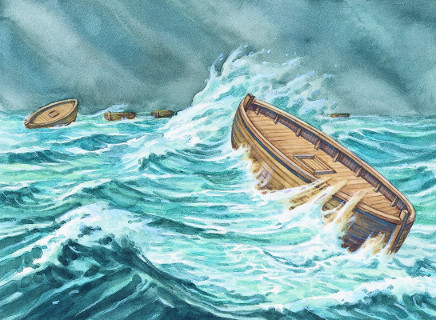 |
Thus, there is a possibility that the Chichimecas were indeed Jaredites who had not been destroyed. Could the Chichimecas have been the people which the Book of Mormon calls Lamanites, who were the principal enemies of the Nephites? That seems very unlikely because that record makes it clear that the Lamanites were south of the Nephites and were unable to break through their string of fortified cities in a mountain range which stretched from the East Sea to West Sea, preventing the Lamanites from breaking though into the Nephite land. Any surviving fleeing Nephites would have gone north, as did the Nahuatls, because the Lamanites killed all who fled south (Mormon 8:2). Thus, the well-established Chichimecas found in the area of Tampico (where the first Toltec king was from), east of where they wished to found Tula, would not have been Lamanites. They would likely have been dissenting Nephites, ten thousand of whom had migrated north about 55 BC (Alma 63:4).
That brings up another serious possibility. The Chichimecas might have been those whom the Book of Mormon calls Mulekites, who had somewhat mixed with the Nephites and who also had migrated north with the Nephites in 55 BC. This may make the most sense for two reasons. First, the beginning of the Aztec history refers to the Chichimecas as the third group of settlers who had migrated from the Old World (Ixl. 1:1), the first being the "Ancient Ones", while the second group were Tultecas (who were first the Nahuatls and then the Toltecs). The Book of Mormon also describes three distinct groups: the Jaredites, Nephites, and Mulekites. Second, and perhaps more importantly, the Mulekites included descendants of Mulek, a son of Zedekiah who escaped having been killed by King Nebuchadnezzar (Hel. 8:21). Hence, he carried the royal blood from King David. If the Chichimecas were Mulekites, it would explain why all kings wanted to claim to have his true royal blood. The Book of Mormon also explicitly states that Mulekites settled in the north and the Nephites in the south (Hel. 6:10).
This last possibility seems the most likely to be correct because Ixtlilxochitl clearly had trouble distinguishing just who the original people were. After all, the Jaredites came 2,000 years before the Toltecs! In any case, this history provides many new clues about the origin and identity of many of these ancient nations.
The Aztec history contains very little about the Nahuatl nation and in fact, does not use that name to describe them. They are simply called the Tultecas who had lived farther south and whose government had been usurped at their downfall. All that is said that they had wars at the end and finally those who were not killed had to flee. Thus, almost nothing is included about the Nahuatl people or culture themselves is in the history. The biggest link to tie them to the Nephites is the year of the final war. The Book of Mormon gives the date as AD 385 (Mormon 6:5) and the Aztec History says that the date of the departure of the refugees was AD 388 (Ixl. 2:1), which they took as a date to remember and reckon from, very much like the Nephites having reckoned their time for the departure of their founding father Lehi from Jerusalem.
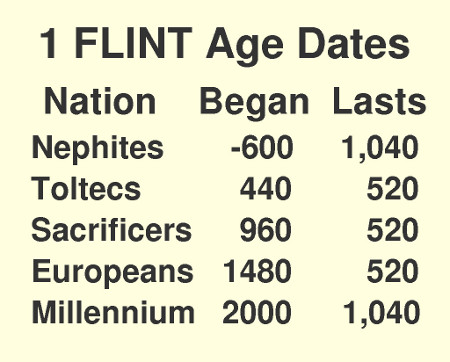 |
In the case of the Nahuatl's (soon to be Toltec's) departure, nothing is mentioned in the text except that they counted from the key date of 1 FLINT, apparently considered as the first year of the 52-year Toltec calendar round.[5] For example, 260 years later, there was a big celebration for having a major age (5 rounds) from that starting point (Ixl. 3:9).
Now for the amazing coincidence. It turns that that if the year of Lehi's departure from Jerusalem is calculated on the Aztec Calendar, it too turns out have been in the Toltec year of 1 FLINT! There is only a one in fifty-two chance of any two randomly chosen dates having been in the same Aztec year. That is statistically significant because usually any result with a better than 1/20 chance is worth noting as probably not due to chance.
Because the periods of 520 years were considered particularly significant to the Toltecs, Table 1 list such periods all beginning with the year named 1 FLINT. The end of the Nahuatl civilization is listed as being in 440 because the Toltec Empire had not yet been founded and it was a transition time. The first year of the Nephites is listed in astronomical notation of AD -600 rather than the usual notation of 601 BC to more easily see that the length of their civilization was 1,040 years, being two 520-year periods. The Age of the Sacrificers refers to Chichimecs for the first half and Aztecs for the last half, but they were not listed separately to emphasize the importance of the 520-year ages.
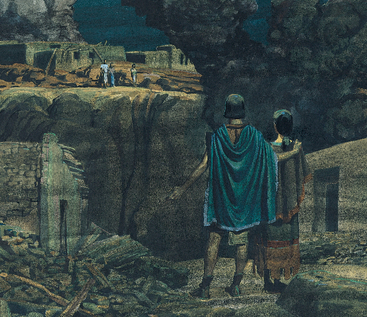 |
It had been 166 years since they had adjusted their calendar with the equinox and 270 years since the giants had been destroyed when the sun and the moon eclipsed and the earth quaked and rocks were broken into pieces and many other signs that had been given came to pass, although man was not destroyed. This was in the year 1 TEMPLE [10 TEMPLE], which, adjusted to our calendar, happened at the same time that Christ, our Lord, suffered. And they say that this destruction occurred in the first few days of the year. -- Ixl. 1:16
The year referred to was AD 33 according to Aztec chronology counting from the earlier dates given, which would have been the year 10 TEMPLE, so that year name is shown corrected. This statement becomes another compelling confirmation of the Book of Mormon because it adds a detail not in the Bible, but which is explicitly stated in the Book of Mormon. The Book of Matthew states that there was darkness and an earthquake at the Crucifixion (Mat. 27:45,51), similar to the claim of the Aztec history. The new detail added in the Aztec account is that it occurred in the "first few days of the year". That was not true in Jerusalem because their year began at a different time. But the Book of Mormon account states:
And it came to pass in the thirty and fourth year, in the first month, on the fourth day of the month, there arose a great storm, such an one as never had been known in all the land. And there was also a great and terrible tempest; and there was terrible thunder, insomuch that it did shake the whole earth as if it was about to divide asunder. -- 3 Nephi 8:5-6
On the Nahuatl/Nephite calendar the darkness and earthquake occurred in the "first few days of the year", exactly as stated in the Aztec history which was written over two centuries before the Book of Mormon. We call that year AD 33, but the Nephites called it the very beginning of their 34th year. That is one of the very few events in either history that was significant enough to include even the very day of the year, and thus is compelling evidence provided in yet another small detail!
Ixtlilxochitl devotes the equivalent of several chapters to the Toltec Empire, including the length of each of the king's reigns. He focuses mostly on the last king, Topiltzin, perhaps because of his great importance and so much had been prophesied about him by Huematzin way back at the beginning of the Empire.
 |
First, the people were clearly rather righteous compared to most, including the Nephites whence they came, who had been destroyed for their wickedness. The first clue to their repentant state, having just seen where wickedness leads, is that they hearkened so much to a true prophet, even concerning where they should settle. Second, they had a strict moral code, such as prohibition of adultery and fornication. Even four centuries after its founding, when the penultimate king has a child out of wedlock, it was kept totally secret to avoid a great scandal. Compare that ethic to European kings who openly had many mistresses with acknowledged children because kings felt they could do what they wanted. Toltec kings were expected to live an even more pure life than their subjects.
Another interesting point is that the age of Huematzin is given as being over 180 years at the founding of Tula (Ixl. 3:2) in AD 505. If he was 180 in 505, then he would have been born in AD 325. Could that have been Moroni's birth year? His father Mormon became the general of the army at the age of only 15 in AD 326 (Mormon 2:2) and was mostly at war thereafter. So it is not unreasonable that he was already married with a son the previous year in AD 325. This is another amazing confirming correspondence between the two records, that a plausible age for the Book of Mormon hero Moroni is given in the Aztec history!
Another clue to their righteousness was that human sacrifice was only reintroduced toward the end the empire. And yet another clue is that the founders set "term limits" of 52 years for a king to reign and that rule was followed for many generations, with the kingdom peacefully being transitioned to a son. Compare that again to European kings where brothers were killing each other to inherit the throne. Reigning kings there had to be on guard to protect their lives because many were murdered. The Book of Mormon teaches that the Americas are supposed to be a light to world, and this was apparently the plan. The grievous sins for which the Toltec Empire was destroyed are listed mostly as sexual immorality. Compare that to how morals in the United States have degenerated so far from those of its Pilgrim founders. Looking at Table 1 shows that our time was up in AD 2000 and we are now ripe for destruction.
 |
The legend is that a Toltec prophet caused this huge stone, 11 feet in diameter and more than two feet thick, weighing 24 tons, to be carved to track the cycles of time, mostly as a warning to the people. Many scholars have thought that stone was produced by the Aztecs in the year shown at the top (1479). They assumed that date was the date of construction as is often found on monuments.
There is, however, one clear indication that it was produced in the time of the reign of Topiltzin, the last Toltec king. It is that the glyph for "Reed" is the maguey (agave) plant. The usual symbol for Reed is an arrow, so why a maguey plant? It turns out that Topiltzin was tied to both 1 REED and the maguey as explained in detail in the Aztec history. He was born in the year 1 REED, and his given name was "Meconetzin, which means "child of the maguey" (Ixl. 4:10) because it was maguey honey which had brought Topiltzin's parents together. He was indeed a child of the maguey and it appears that he was immortalized in the use of the maguey for "reed" in the Aztec (really Toltec) Calendar. I know of no codex which depicts Reed as anything but a reed or arrow (made from reeds) as the date 2 Reed is shown in Figure 2, which was taken from a Mixtec codex.
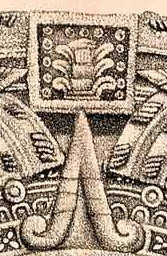 |
The next cycle of the Year of Warning was 13 REED (1479) 520 years later. This signaled the demise of the Aztecs. The legend is that when that year got close they buried the stone so as not to frighten people and replaced it another without a Year of Warning.[6] This time the end came 39 years after 1 FLINT with the arrival of Cortez in 1 REED.
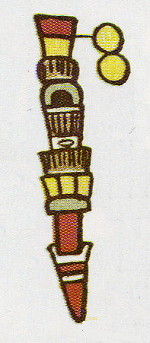 |
There is most likely one more time for the Year of Warning to be heeded. After the Millennium, the Bible prophesies that Satan will be released again and another great war will ensue (Rev. 20:7-8). That might well refer to 1 FLINT in AD 3040 (after the 1,040-year Millennium), with the Year of Warning being 3039. Time will tell!
Ixtlilxochitl includes a short summary of a visit of Quetzalcoatl, the Plumed Serpent, to the Toltecs. The excerpts available to me to include in this article are few. Hopefully there will be more when the entire volume is translated to English. But let us compare those few to the teachings of Jesus Christ to the Nephites (Nahuatls) which are included in the Book of Mormon, when Christ had visited them.
First, even though Ixtlilxochitl was unaware of the identity of Quetzalcoatl, other than he was teacher of righteousness, it is clear that Quetzalcoatl was the resurrected Jesus Christ. Other Native American histories give the year of His visit to the Nahuatls as being in the first century AD, agreeing with the Book of Mormon account. Moreover, as we shall see, both were not just prophets, but instead indentified themselves as the Creator and to be the God to be worshipped.
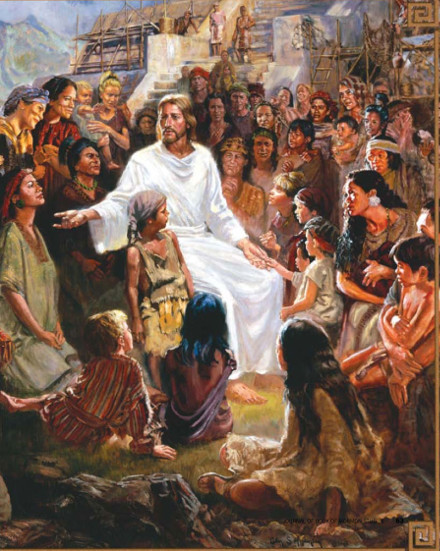 |
And he was the first to be worshipped and to be placed in authority, and for that reason he is called Quiauhtzteotlchicahualizteotl and Tonaceaquahuitl, which means god of the rains and of health and tree of sustenance or of life. -- Ixl. 1:38
In the Book of Mormon, when Christ appeared, descending from heaven, He immediately identified Himself because the gazing crowd thought he was an angel:
Behold, I am Jesus Christ, whom the prophets testified shall come into the world.
And behold, I am the light and the life of the world; and I have drunk out of that bitter cup which the Father hath given me, and have glorified the Father in taking upon me the sins of the world, in the which I have suffered the will of the Father in all things from the beginning. -- 3 Nephi 11:10-11
In addition, His teachings as summarized in the Aztec history help identify him as the Savior:
Quetzalcoatl ... was considered just, saintly, and good, teaching them by deeds and words the road to virtue. He instructed them to refrain from vices and not to sin, and he gave them laws and sane doctrine. He told them to constrain their appetites and to be honest, and he instituted the law of the fast. -- Ixl. 1:37
Similar teachings were given to the Nephites, including a repetition of the entire Sermon on the Mount, which summarizes his teachings.
There was one teaching which Quetzalcoatl reportedly gave to the Toltecs which is not included in Mormon's summary of what Christ taught the Nephites:
And at the time of his farewell from these people, he told them of times to come. He said that in the year that would be called 1 REED, he would return and then his doctrine would be accepted, and his children would be lords and heirs of the earth. He also told them that they and their descendants would pass through great calamities and persecutions. He prophesied of many other things that would surely come to pass. -- Ixl. 1:40
According to this history, he shared with them the name of the year in which He would return. That year occurs once every 52 years, but that prophecy still contains a lot of information. It is discussed more in Section 7.
Quite of lot of detail is provided about the fall of the Toltec Empire. Dates are given of warnings of war, plans, battles, and even exactly who killed the parents of Topiltzin. Moreover, details of many "acts of God" natural disasters are given, interpreted as punishments for evil deeds, especially of King Topiltzin, who was supposed to be an example for his people. These details must have been provided by either Topiltzin himself or a scribe who was with him. We are told he not only survived, but lived for more than thirty years afterward.
The whole scenario is somewhat reminiscent of the Book of Mormon account which gives many details about the last battles in the fall of the Nephites, and then notes that Moroni lives at least 35 years afterward. He too keeps a record and testifies as a witness of these events.
 |
He prophesied:
He said to his vassals, to the few who were in Culhuacan and who had gone there to escape from the enemy, that he was going towards the rising sun to some kingdoms and possessions of his ancestors, very prosperous and rich and that five hundred and twelve years [520] later he would return to this land in the year 1 REED and would punish the descendants of those kings, his competitors. And many other things he said, many impossible promises he made to his vassals, which would be too long to relate. -- Ixl. 6:14
The reader can note that Ixtlilxochitl considered this prophecy that Topiltzin would return in 520 to punish the descendants of his enemies an "impossible promise" and seems embarrassed to have added any more, lest he be discredited just by including them. This one, however, was well enough known that apparently he could not omit it.
What needs to be understood is that each age starts with a new leader who apparently shows up 39 years after the beginning of the age, or at least not necessarily right at the beginning. Topiltzin means "Our Son" or "Our Prince",[7] and it could well serve as a title for whichever leader is ruling at the time. So in a sense Cortez had the "Topiltzin hat" on when he arrived to fulfill the role of punishing the descendants of the Chichimecas who destroyed the Toltec Empire.
Moreover, when the Savior returns, He too could be called Topiltzin, "Our Prince, Son of the Most High", to rule over the Millennium.
A possible side note is that Moroni might have filled a Topiltzin-type role at the beginning of the Toltect Empire. The year 1 FLINT was 388, three years after the final Nephite war of extinction. Moroni himself states that he was a lone survivor of the war (Mormon 8:3) and that he wandered alone until 401 (1 TEMPLE) avoiding being killed by the Lamanites (Mormon 8:6).
At that point he adds more to his father's book and he then also translates the Book of Ether. Presumably he used the Urim and Thummim to do so, which he would have with him, and which he would bury someday with the plates for Joseph Smith to translate the record.
Then the record is silent until the year AD 421 (Moroni 10:1) at which time Moroni was still alive and decided to write his own "Book of Moroni" to add some details about how they performed ordinances and two great doctrinal epistles from his father. Then he adds his parting admonition and says he will then seal up the book, presumably referring to the metal bands around it. Note that he does not say he is still alone in AD 421, and he has had the unsealed plates with him for some 36 years since the final war in AD 385.
Comparing that timeline to the Aztec history, at some point Huematzin joined a group of nobles who had fled northward seeking refuge and to start a new civilization. That group said it did not actually leave until 8 years after 1 FLINT (388) due to continued warring (Ixl. 2:22), so they left in 396. They went some distance and lived for three years in a land they settled and named Tlapallanconco, but then decided to move on after three years there. They then settled a place about 180 miles from there (70 leagues of 2.6 miles each) and settled what they called Hueyxallan where they stayed four years. The third year, which would have been 13 after 1 FLINT, they say was 1 TEMPLE (AD 401) (Ixl. 2:24). That was the same year that Moroni finished his father's book.
Thus, it seems entirely possible that Moroni encountered the group of settlers shortly after AD 401. The Aztec history claims he wrote a very large holy book in picture writing (a codex) which was called the Teoamoxtli, describing the sacred history of his people. He could have done that using the plates as a source any time between AD 401-421, after which he sealed the record. In the Teoamoxtli he included several prophecies about Topiltzin who would be the last king of the Empire they were about to begin. He even prophesied that the final destruction of the kingdom would be in a year 1 FLINT (Ixl. 2:9), which it indeed was (AD 960).
This section is being added after the rest of this article was completed. Just today it was discovered that this year is a halfway mark and yet another year of warning! It also marks 500 years since the arrival of Cortez in 1519! It's hard to believe that was not even noticed until this article is going to be published!
 |
The same concept concept applies to years on the Aztec Calendar. Forty years after 1 REED comes 2 REED, and forty years later comes 3 REED. For example, Topiltzin was born in the year 1 REED (Ixl. 4:10). Forty years later he was crowned king in 2 REED (Ixl. 4:23). Forty years later the destruction of the Empire was in its third year 3 REED with heavy frosts destroying all the crops (Ixl. 5:10)! These three years are enough to suggests the importance of defining a "STEP" (all caps) to be a forty-year period.
Another example of a STEP is that forty years after 13 REED comes 1 REED. 13 REED is the Year of Warning! In the case of Cortez being the "Quetzalcoatl" of his age, the year 13 REED was 1479 as discussed above, and Cortez arrived forty years (1 STEP) later in 1 REED in 1519! According to the prophecy of Queztalcoatl, who was Jesus Christ, the same concept will hold for His Second Coming, it will be forty years (1 STEP) after 13 REED in 1 REED!
Twenty years is then half a STEP. This year (2019) is 7 REED, twenty years after the Year of Warning (1999) and twenty years before the prophesied Second Coming (2039). This year, in that sense, is yet another "Year of Warning", telling us to get our houses in order, looking forward to what will be glorious days for believers and a day of burning for the proud and the wicked (Mal. 4:1).
Here is another thought for those who are remembering scriptures which say that no man knows the day nor the hour of the Second Coming of Jesus Christ. In fact, they say that even Jesus Himself does not know the day nor the hour, but only the Father knows (Mark 13:32). How can that possibly be true, that even Jesus does not know the day of His coming?
There is a wonderful book named Beloved Bridgegroom[8] which provides the answer to this question by describing in detail a traditional Hebrew wedding. That is relevant because the scriptures refers to the event of the Savior returning to His covenant people as a Brigegroom coming to His wedding to them, who constitute His bride.
After a Hebrew couple was engaged, which was a binding covenant, the bridegroom began to build a home for them. Only his father could determine when the new house was good enough to be acceptable. When it was, he announced the date of wedding. Thus, following that pattern, it is actually true that even Jesus does not know the day of His coming, for it will be determined by the Father!
On the other hand, the bridegroom may, and almost certainly would, know the year of his wedding. Similarly, Jesus can know the year of His Second Coming, and according to Ixtlilxochitl's summary of Toltec history, He promised His people that His coming would be in the year 1 REED (Ixl. 1:40)!
If so, this year serves as the "Twenty Year Warning" year to prepare for the Second Coming!
An English translation published today of the Aztec prince Ixtlilxochitl's history of the Toltecs is compared to the Book of Mormon account of the Nephites/Nahuatls who preceded the Toltec Empire. It is found the the great prophet who led the founding of the empire was most likely the last prophet (Moroni) of the Book of Mormon narrative. Points of similarity included his having written a sacred history of the Nahuatls, his age, and the year of departure of the Toltec founders having fled to safety right after the final Nephite war ended.
Moreover, several points of correspondence in the two accounts of the first settlers who came from the Tower of Babel also matched, the most unusual detail being that one account said they crossed the ocean in covered light-tight barges and the other said they came in "caves".
Both books also have accounts of visitations by Christ/Quetzalcoatl, with summaries of His teachings. Both accounts mention that the Crucifixion occurred in AD 33 in the first few days of their year, a detail which could not have been taken from the Bible. Another key point in the Toltec account is that He promised to return in a year named 1 REED at which time his teachings would be accepted. That year equates to 2039.
It is concluded that both books are relating true history as honestly as the writers could understand and objectively report it. The two books together become strong witnesses of the history of the inhabitants of ancient American and of the visitations of Jesus Christ!